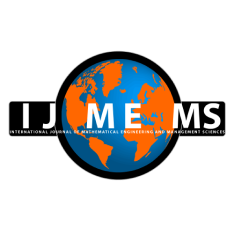Sandeep Vishwakarma
Department of Computer Engineering, J.C. Bose University of Science and Technology, YMCA, Faridabad, India.
Anuradha Pillai
Department of Computer Engineering, J.C. Bose University of Science and Technology, YMCA, Faridabad, India.
Deepika Punj
Department of Computer Engineering, J.C. Bose University of Science and Technology, YMCA, Faridabad, India.
DOI https://doi.org/10.33889/IJMEMS.2023.8.4.042
Abstract
Hazy images and videos have low contrast and poor visibility. Fog, ice fog, steam fog, smoke, volcanic ash, dust, and snow are all terrible conditions for capturing images and worsening color and contrast. Computer vision applications often fail due to image degradation. Hazy images and videos with skewed color contrasts and low visibility affect photometric analysis, object identification, and target tracking. Computer programs can classify and comprehend images using image haze reduction algorithms. Image dehazing now uses deep learning approaches. The observed negative correlation between depth and the difference between the hazy image’s maximum and lowest color channels inspired the suggested study. Using a contrasting attention mechanism spanning sub-pixels and blocks, we offer a unique attention method to create high-quality, haze-free pictures. The L*a*b* color model has been proposed as an effective color space for dehazing images. A variational auto-encoder-based dehazing network may also be utilized for training since it compresses and attempts to reconstruct input images. Estimating hundreds of image-impacting characteristics may be necessary. In a variational auto-encoder, fuzzy input images are directly given a Gaussian probability distribution, and the variational auto-encoder estimates the distribution parameters. A quantitative and qualitative study of the RESIDE dataset will show the suggested method's accuracy and resilience. RESIDE’s subsets of synthetic and real-world single-image dehazing examples are utilized for training and assessment. Enhance the structural similarity index measure (SSIM) and peak signal-to-noise ratio metrics (PSNR).
Keywords- Auto-encoder, Atmospheric scattering model, CLAHE, Dehazing network, Machine learning, Neural network.
Citation
Vishwakarma, S., Pillai, A., & Punj, D. (2023). An Enhancement in Single-Image Dehazing Employing Contrastive Attention over Variational Auto-Encoder (CA-VAE) Method. International Journal of Mathematical, Engineering and Management Sciences, 8(4), 738-754. https://doi.org/10.33889/IJMEMS.2023.8.4.042.



